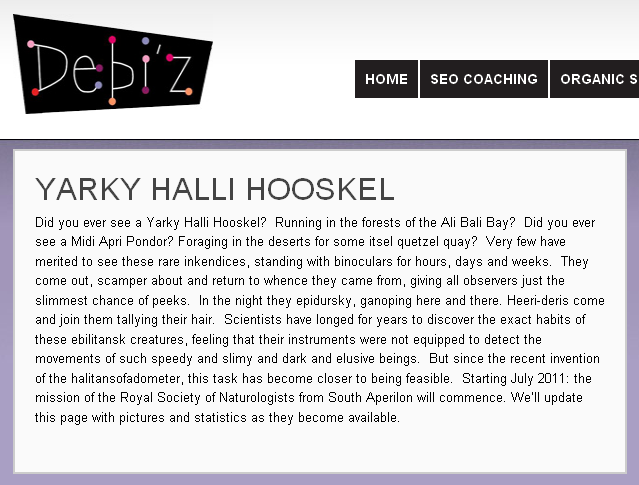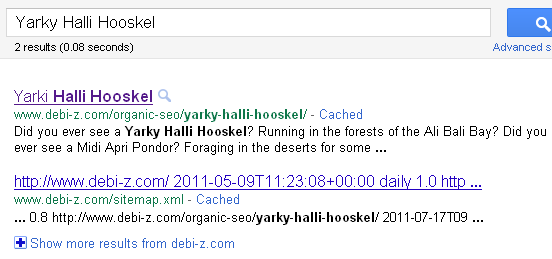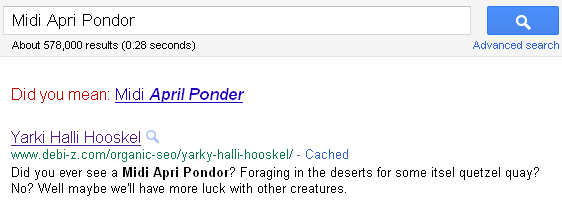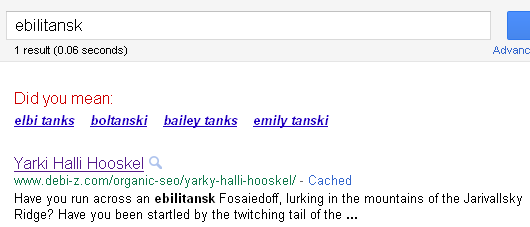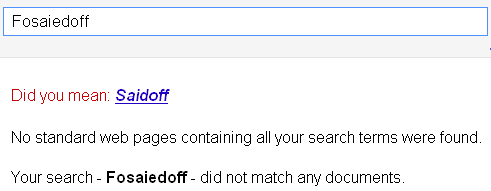"Your description tags should be under 160 characters" goes prevailing SEO wisdom. But is it accurate?
True, 160 is the approximate number of characters Google will show in a snippet (see a great two-year old but still current information post from SageRock listing the length of title and description tag for each search engine: and it's actually 156 according to him).
And everyone seems to think that the recommended length of the tags you write is the same as the length of characters shown.
For example, the incredibly helpful All-in-One SEO Pack plugin for WordPress has a character counter under the meta description field so you can see how long your description is, with the explanation, "Most search engines use a maximum of 160 chars for the description." SEOMoz also recommends using 150-160 characters in the description so it won't truncate.
But have you ever been frustrated trying to stuff your keywords (especially if you have more than one keyphrase) into 160 characters and still make it sounds like compelling ad copy?
You may not have to.
While doing keyword research for one of our clients, I noticed that a competing site had quite a nice snippet with the keyword, but when I checked the page, that text wasn't there. It also wasn't in the beginning of their ridiculously long description tag (probably more text in the tag than on the page). These people don't know how to write description tags, I said to myself immediately. Except, the more I looked, the more I realized that maybe they knew more about description tags than I did. (Or maybe it was just a fortunate mistake.) Because - about 200 characters into the description, there began a sentence that contained the keyword in question - and it was that sentence and the one afterwards that had been used as the description snippet I had seen in the search results.
Hmm... does Google see and use more of the description tag than the 160 characters - even though it will only show about 160 at a time?
I decided to run an experiment to find out.
The Experiment
Step 1: I created a page on our site with a nonsense title and quite a few nonsense words in the text.
Step 2: I gave it a really long description, with a good number of nonsense words that weren't in the text of the page.
Step 3: I linked to it from within the site and waited until Google indexed it.
Results
I searched for some of the keywords in the description. Trying the "main keyword" of our page - "Yarky Halli Hooskel" gave me:
Okay - that seems normal. It''s either coming from the page or the description tag (it's in both), and it cuts it off at about 153 characters.
Next, "Midi Apri Pondor":
147 characters over there, but - something interesting.
- The first two sentences are on-page: "Did you ever see a Midi Apri Pondor? Foraging in the deserts for some itsel quetzel quay?"
- The next sentence comes from the description tag: "No? Well maybe we'll have more luck with other creatures"
- And that entire snippet, from "Did you ever..." to "...other creatures" is actually characters 85-231.
So Google is showing more than just those first 160 characters, possibly with the caveat/benefit that there's a new sentence that it can start from prior to the keyword being searched for. Note how above the snippet starts from "Did you ever see a Midi Apri Pondor?" which is the third complete sentence in the description tag.
Onwards! Let's try "ebilitansk":
Curiouser and curiouser. "Ebilitansk," which starts at character 255 of the description tag, triggers the snippet. In fact, the entire snippet is characters 231-380 of the description tag - well beyond the pale of our 160 character limit.
Yes! you cry. The sky's the limit!
But not quite. More like 265 characters.
Let's take a look at the word right after "ebilitansk": "Fosaiedoff".
And this was the result for any succeeding nonsense phrase in the description that I tried. It was also the result for a search for "ebilitansk fosaiedoff."
But wait! In the last description, Google brought "Fosaiedoff" in the snippet. And "Jarivallsky Ridge." It's obviously reading them!
Must be. But it's not returning them for search results.
Conclusions
So... the conclusions I draw from this little experiment (which is obviously one isolated experiment. Please check on your own, and I'd be happy if you updated me on any conflicting results):
- Google reads way more of the description than just 160 characters.
- If you use sentence breaks, you can have your snippet show for a keyword search if that keyword appears before the 265th character in your description.
- You can potentially have up to the 380th character in your description show in the snippet if the keyword searched for appears before the 265th character (my guess is that it would go up to character 410 or so - if your keyword starts a sentence and its last letter is just before that 265th character).
So write some long descriptions. Write them wisely. Use good English (no run-on sentences). Place keywords strategically - one compelling sentence for each one. And see what happens. Let me know. And if you see any Yarky Halli Hooskels, you can let me know that too.



